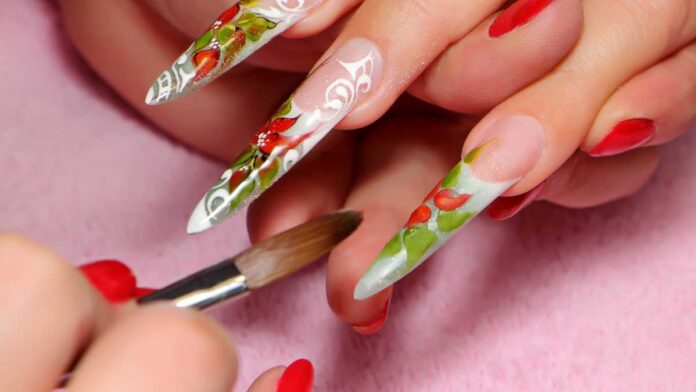Acrylic nails, often known as fashion nails, are perfect if you have missing or badly formed nails. These nails are designed to seem like real nails. However, before you get them done, you should be aware of the benefits and drawbacks of artificial nails.
If you wish to attend every special occasion or wedding with fashionable nails or if you like well-groomed and manicured nails, acrylic nails are for you.
According to experts, it is best to get acrylic nails done by a professional because you cannot do it well at home. Furthermore, it needs specialised training.
As a result, unless you are a certified professional or a manicurist, you should only do it at home. In 1954, a dentist called Fred Slack invented an artificial nail as a temporary replacement after breaking his fingernail at work.
After completing testing using various materials to perfect his idea, he and his brother, Tom, patented a successful version of it. They went on to found the firm Patti Nails.
If you want to give these nails a try, follow this step-by-step instruction to applying acrylic nails. Acrylic extensions are appropriate for ladies who have brittle or weak nails.
Acrylics are ideal for ladies who chew their nails since they are difficult to remove. What better method to break a bad habit than to make the injured region as attractive as possible? Because acrylic nails have been around longer than their counterparts, most nail technicians at salons and spas are well-versed in how to apply and remove them. You don’t have to be concerned about adverse effects.
They are less expensive than their competitors. The lighter your wallet, the happier you will be. Agree?
The biggest advantage of acrylic nails is that if one breaks, it can be repaired at home with the proper equipment. You don’t have to spend another dime to get things fixed. They are more durable than gel nails.
Cons
They can harm your natural nail below, and growing out your nails with acrylic over them can be difficult. In addition, fungi and bacteria thrive in damaged nails.
Because acrylic nails are artificial improvements, they have a phoney appearance. You’ll need a highly skilled technician who can apply acrylics that seem as natural as possible.
Acrylic nail application necessitates the use of harsh chemicals and the production of fumes. Some women may be allergic to these drugs.
Every month, you must replenish, which incurs additional costs. Let’s have a look at the steps of applying these nails.
How Do You Put On Acrylic Nails?
Step 1: Prepare Your Nails
Starting with clean nails is always a good idea.
Having a smooth substrate allows the acrylic material to adhere easier.
Remove any nail paint and gently push the cuticles back.
Step 2: Trim Your Nails
The manicurist will most likely cut and file your nails, leaving a few millimetres for the nail extension to adhere to.
Step 3: Buff Your Nails
She will next buff your nails so that the surface is slightly rough. This rough surface allows the acrylic to adhere easily.
Step 4: Apply Nail Primer
To eliminate any leftover moisture and oil from the nails, a nail primer would be used.
Clean the nails with an acetone-soaked cotton swab before applying the primer.
Some primers include an acid known as methacrylic acid.
Take caution, since it may burn.
If you are unsure, you can use the acid-free primer.
Step 5: Put The Advice To Work
This is the point at which the real application begins.
The tips will be filed to fit your nails and will be glued to your natural nails.
The adhesive should not come into contact with your skin.
The nail may be trimmed and sized to your exact needs.
Step 6: Get the Acrylic Material Ready
The acrylic liquid would be placed into one dish, and some of the powder would be poured into another. A word of caution: The fumes produced by acrylics are powerful, so this should be done in a well-ventilated location.
Step 7: Using the brush, pick up the acrylic.
The manicurist will fully immerse the brush in the liquid. Make certain that there are no bubbles. To prevent leaking, she will brush any surplus liquid against the side of the dish. The brush will then be rubbed against the powder, resulting in a damp ball. This is the substance that will be applied to the nail.
Step 8: Use the Combination
She will apply the mixture to your nails without touching the cuticles and smooth it out as she goes. The transition from the tip to your natural nails should be seamless. If necessary, apply another coating.
Step 9: Allow It to Dry
It should dry in approximately 10 minutes. After that, buff and file the nails to make them smooth.
Finishing Touches (Step 10)
You can paint your nails now. You may use whatever nail paint colour you choose, including glossy, matte, and metallic. However, make sure the nail polish does not include acetone, as this can reduce the life of your artificial nails.
For latest Bollywood Update Follow us on Instagram & Watch on Youtube



